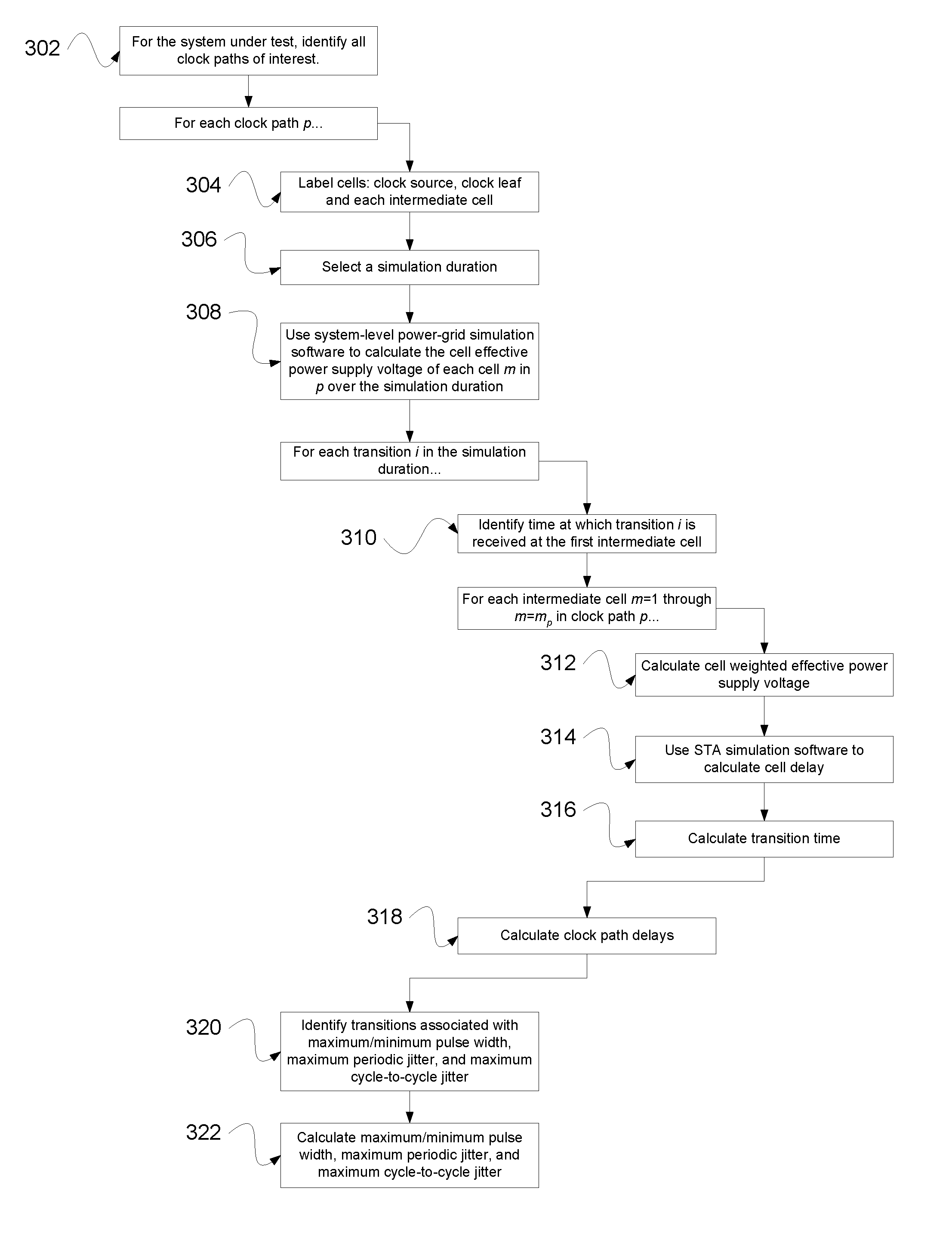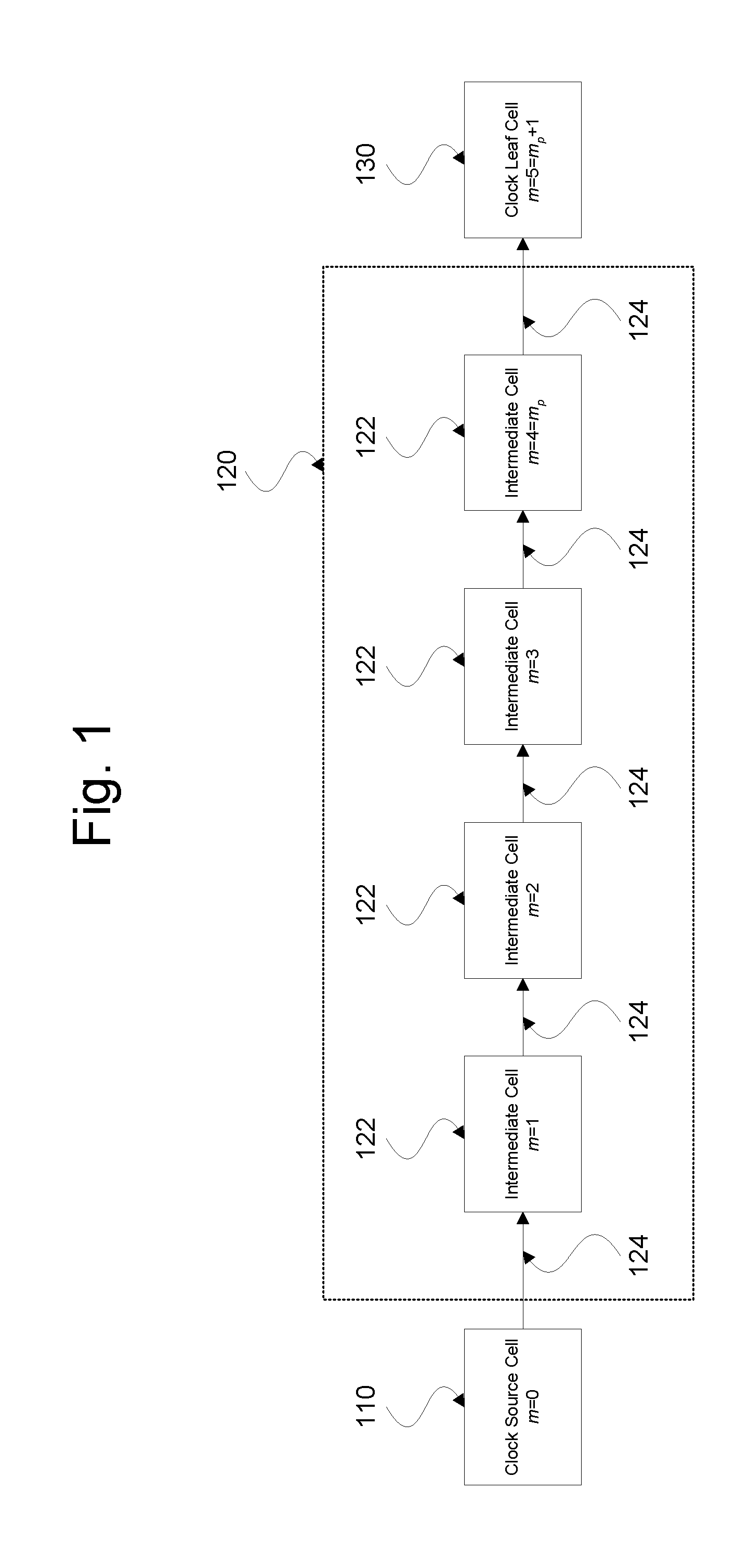Characterizing performance of an electronic system
a technology of electronic systems and performance, applied in the field of electronic circuit simulation, can solve problems such as small penalties
- Summary
- Abstract
- Description
- Claims
- Application Information
AI Technical Summary
Benefits of technology
Problems solved by technology
Method used
Image
Examples
Embodiment Construction
[0034]FIG. 3 is an exemplary flowchart of steps to be performed in one embodiment of the present invention.
[0035]The first step (302) is to identify all clock paths of interest. Some clocks within a system may be slow enough that jitter is not a concern, and a designer can exclude those clocks' paths from the simulation.
[0036]In the second step (304), for each clock path of interest p, let mp equal the number of intermediate cells in clock path p. Label the clock source cell m=0. Label the intermediate cells m+1 . . . mp. Label the clock leaf cell m=mp+1. This numbering is illustrated in FIG. 1.
[0037]The third step (306) is to select a time duration for simulation, known as the simulation duration. Usually, the selected simulation duration is three to five times the duration of slowest significant cause of Veff,m variation. Typically, package inductance / board capacitance resonance (LC resonance) is the slowest significant cause of Veff,m variation. For example, if LC resonance of a ...
PUM
 Login to View More
Login to View More Abstract
Description
Claims
Application Information
 Login to View More
Login to View More - R&D
- Intellectual Property
- Life Sciences
- Materials
- Tech Scout
- Unparalleled Data Quality
- Higher Quality Content
- 60% Fewer Hallucinations
Browse by: Latest US Patents, China's latest patents, Technical Efficacy Thesaurus, Application Domain, Technology Topic, Popular Technical Reports.
© 2025 PatSnap. All rights reserved.Legal|Privacy policy|Modern Slavery Act Transparency Statement|Sitemap|About US| Contact US: help@patsnap.com



